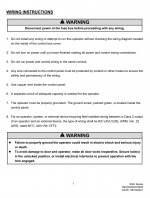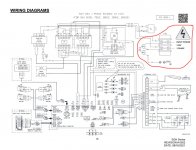ericwg
Member
- Location
- Sacramento, CA
- Occupation
- Associate Electrical Engineer
I've got an apparatus bay for a fire station design I'm working on which will have 6 overhead sectional doors, hence 6 operators. In most our past designs, there was a sub-panel within the apparatus bay, which meant we used the branch ckt OCPD as the disconnecting means for the overhead door operators, typically 115V-1/2 HP. As far as wiring, at each operator we typically install a recessed j-box in the wall behind the operator or in the ceiling just above it, with 3/4" seal-tight connected to the face of it which then runs to the operator. In this new design I'm working on, the sub-panel is no longer located within the apparatus bay. Thus, it is not within sight of the operators and I cannot use the branch ckt OCPD as the disconnect. I was going to employ the same j-box and seal-tight except that adjacent to the j-box I was going to add a second box to house a 20A/1HP rated general snap switch with a lockable wall plate cover on it. Going this route I know I'm code compliant as far as the disconnect is concerned. I had another idea which I thought would simplify things a bit. I thought I might just install a 125V/20A/1HP simplex receptacle in the j-box I normally connect the seal-tight to. Then, I could have the contractor construct a 12awg SOOW cord of adequate length, hard-wired at the operator, with a 125V/20A/1HP rated plug on it, which could connect the operator to this receptacle. The question is, if I went this route, would this "cord and plug" be suitable to use as a disconnect? As I read through 422.31, 422.34, and 430.109(F), one minute I convince myself it's perfectly fine, then a few minutes later I think maybe not. Thoughts? Appreciate it if you could include whatever code section goes along with your position.





